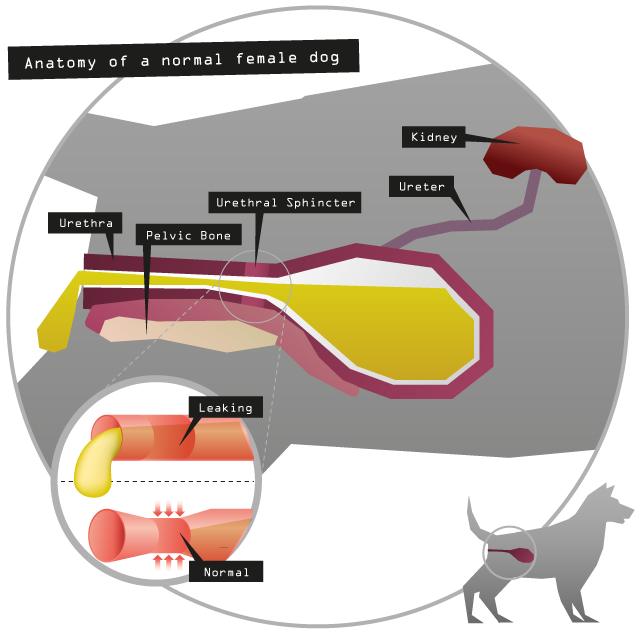Causes of
Urinary Incontinence (UI)
One of the main ways of categorising the causes of UI is to split them in to ‘Neurogenic’ and ‘Non-neurogenic’.
Neurogenic causes involve problems with the nerves that control urine storage and urination. These nerves start in the spinal cord (central nervous system) and then become peripheral (outside the brain and spinal cord) nerves when they leave the spinal cord and travel to the bladder. If there is damage to these nerves at any level e.g. fracture of the spine or pelvic area following a road traffic accident, then this can often result in UI and would be classed as a ‘neurogenic’ cause.
Anything not involving the nervous control of the bladder would be classed as ‘Non-neurogenic’. Examples of this would include urethral sphincter mechanism incompetence (USMI), detrusor instability, ectopic ureters and prostatic disease. Please see below for further information.
The most common cause:
Urethral Sphincter Mechanism Incompetence (USMI) – This is the most common cause of UI in dogs, especially in neutered medium to large breed adults. It can occasionally be a condition that they are born with.
If the sphincter is weak and does not close properly, urine can leak. This mainly happens when your dog is relaxed or sleeping, which is why you may notice a wet patch after they have been lying down, although, they can also leak when exercising.
The diagram below shows the anatomy of a normal female dog and the location of the urethral sphincter.

Several factors can play a role in the developmentand the severity of USMI in a patient:• Age• Abnormal positioning or structure of the bladder or vagina• Breed predisposition. In general, large and giant breeds seem to be more predisposed to suffering from the condition.• Obesity. While this may not cause USMI it can worsen the condition• Neutering and hormones. There is thought to be a connection between neutering and UI which is likely to be due to a lack of oestrogens or an excess of other hormones which are not suppressed after neutering. Neutered dogs are more likely to get USMI, the risk has to be balanced against the benefits such as unwanted pregnancies and eliminating the risk of some cancers and other conditions. Ask your vet for advice if you are not sure.• Sex – USMI is much more common in a female dog
A presumptive diagnosis of USMI can often be made by your vet by taking into account the age, breed and sex of the dog along with asking questions about the characteristics and pattern of incontinence. Further tests such as blood tests and examining urine samples are usually required to rule out other possible causes of the incontinence. Occasionally further tests such as taking X-rays of the bladder may be necessary.
There are a few medical treatments that are available, and the significant majority of female dogs will respond favourably to the medication.
Click here to see less common causes
*Disclaimer – some of the drugs mentioned on this website may not be available in your country or may be being used off label, please speak to your vet for information.



